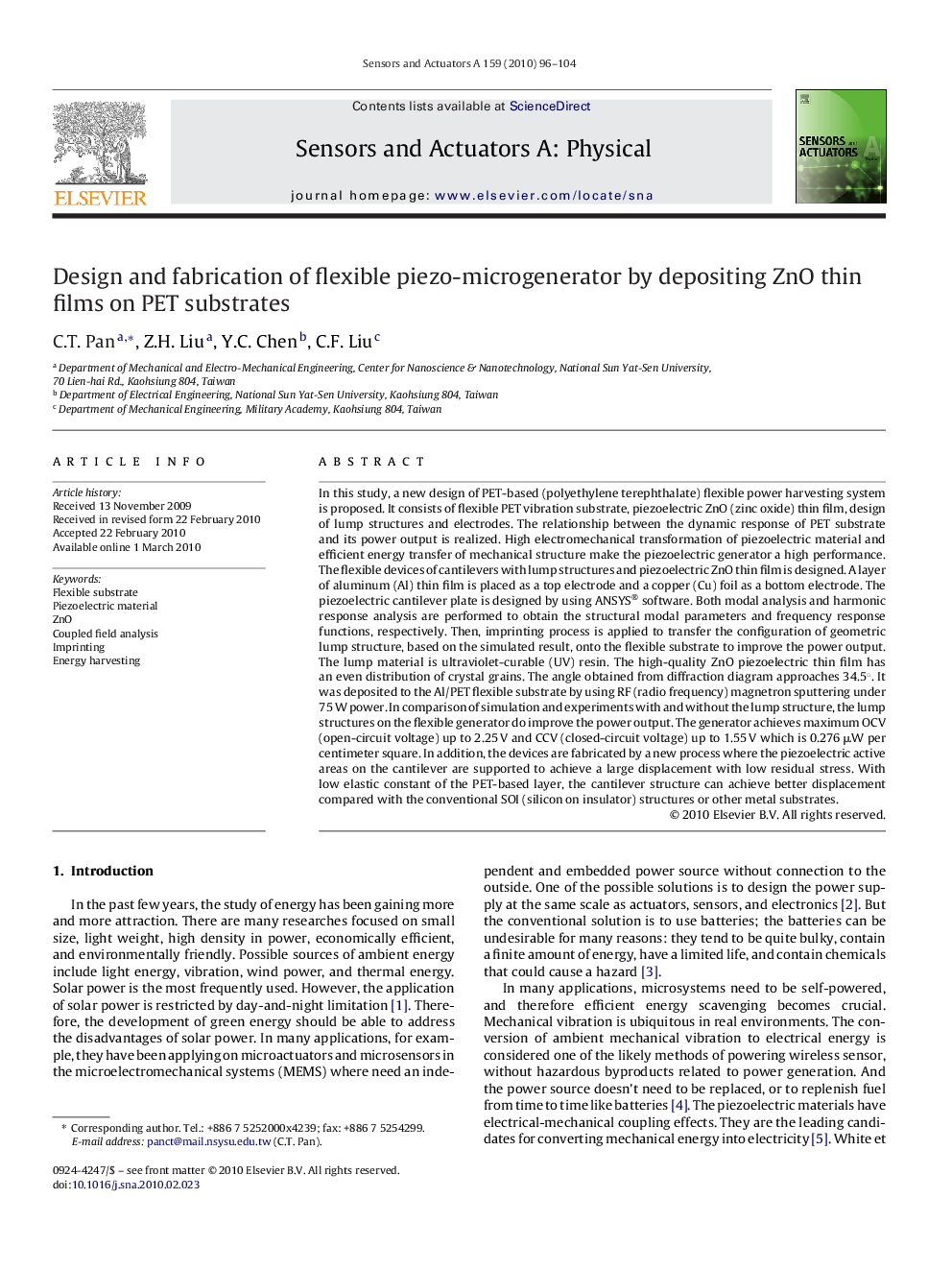| Article ID | Journal | Published Year | Pages | File Type |
|---|---|---|---|---|
| 749262 | Sensors and Actuators A: Physical | 2010 | 9 Pages |
In this study, a new design of PET-based (polyethylene terephthalate) flexible power harvesting system is proposed. It consists of flexible PET vibration substrate, piezoelectric ZnO (zinc oxide) thin film, design of lump structures and electrodes. The relationship between the dynamic response of PET substrate and its power output is realized. High electromechanical transformation of piezoelectric material and efficient energy transfer of mechanical structure make the piezoelectric generator a high performance. The flexible devices of cantilevers with lump structures and piezoelectric ZnO thin film is designed. A layer of aluminum (Al) thin film is placed as a top electrode and a copper (Cu) foil as a bottom electrode. The piezoelectric cantilever plate is designed by using ANSYS® software. Both modal analysis and harmonic response analysis are performed to obtain the structural modal parameters and frequency response functions, respectively. Then, imprinting process is applied to transfer the configuration of geometric lump structure, based on the simulated result, onto the flexible substrate to improve the power output. The lump material is ultraviolet-curable (UV) resin. The high-quality ZnO piezoelectric thin film has an even distribution of crystal grains. The angle obtained from diffraction diagram approaches 34.5°. It was deposited to the Al/PET flexible substrate by using RF (radio frequency) magnetron sputtering under 75 W power. In comparison of simulation and experiments with and without the lump structure, the lump structures on the flexible generator do improve the power output. The generator achieves maximum OCV (open-circuit voltage) up to 2.25 V and CCV (closed-circuit voltage) up to 1.55 V which is 0.276 μW per centimeter square. In addition, the devices are fabricated by a new process where the piezoelectric active areas on the cantilever are supported to achieve a large displacement with low residual stress. With low elastic constant of the PET-based layer, the cantilever structure can achieve better displacement compared with the conventional SOI (silicon on insulator) structures or other metal substrates.
